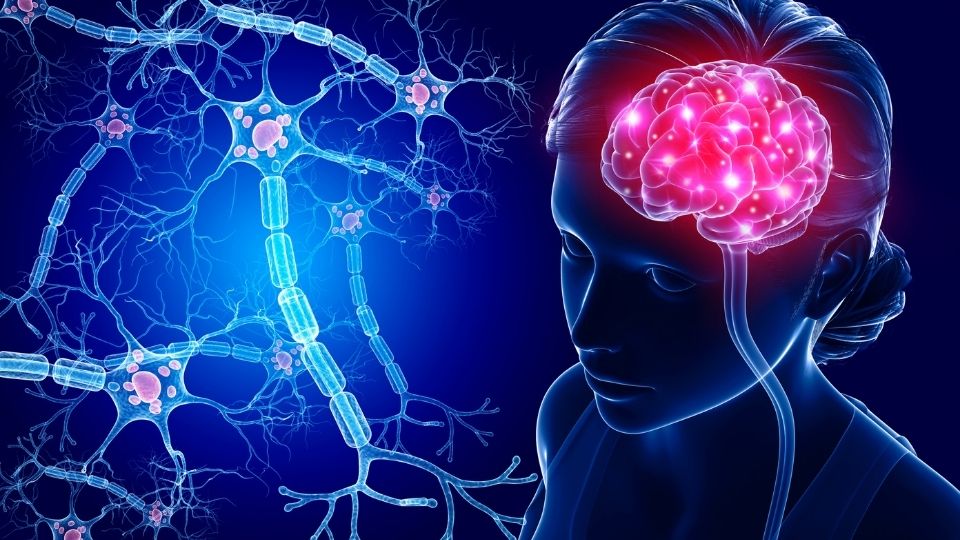Dementia Risk: Is It Nature or Nurture?

“Nature vs. Nurture” and Alzheimer’s Disease (AD)
There has long been a debate as to whether most of the factors that make us who we are come from genetic or environmental influences—the so-called “nature vs. nurture” debate. Scientists seem to agree that both genetic influences (what we’re born with) AND environmental influences (what we are exposed to and what we experience throughout our lives) are often BOTH at play. While there are a number of diseases that cause dementia, Alzheimer’s disease (AD) is by far the most common. Genes definitely play a role in AD risk; however, a recent report on the genetics of AD estimated that genetics currently explain only about one third of the cases of AD (Ridge et al., 2013). This is very good news indeed, and suggests that a large part of our risk for eventually developing AD comes from environmental influences. There is a growing body of evidence that through healthy lifestyle choices, we can indeed have some impact on our brain’s health.
 Exercising Your Physical Body
Exercising Your Physical Body
There are certainly many reasons to be physically active, like reducing your odds of heart disease, stroke and diabetes. Lowering your blood pressure, losing weight, and avoiding or helping to recover from depression are other benefits. But did you know that exercise is also great for your brain and memory? Physical exercise improves the functioning of neurotransmitters, the chemical “messengers” in the brain responsible for communication across brain cells for such things as controlling memory and other cognitive functions, regulating mood, influencing appetite, and enhancing sleep quality.
Discuss with your healthcare provider the best way to begin an exercise program, or to safely increase it once you’ve already started. Then move ahead with confidence that you are helping to keep your heart healthy and your brain operating at top capacity by doing so.
Exercising Your Brain
Researchers have observed that keeping mentally active may slow memory loss and lower AD risk. Scientists are not absolutely certain why this is so, but a popular theory is the “cognitive reserve” hypothesis which suggests that mentally stimulating activities where we “exercise the brain” may actually promote greater connections throughout the brain. Studies have shown that higher formal education, more complex occupations, and engaging in leisure and mentally stimulating activities are linked to increased cognitive reserve as a protective factor against dementia (Harrison et al., 2015). Learning something new is what the  experts refer to as “novel information processing” and this type of activity provides even greater brain stimulation because they stretch the brain’s ability to adapt to new information. This might include activities such as learning a new foreign language or how to play a new musical instrument, or a new craft technique. Additionally, other kinds of activities, even if not novel or entirely new, still can provide good exercise for the brain. Examples include reading a good book, attending a concert or play, and having a stimulating discussion with others (e.g., about a book you’ve read).
experts refer to as “novel information processing” and this type of activity provides even greater brain stimulation because they stretch the brain’s ability to adapt to new information. This might include activities such as learning a new foreign language or how to play a new musical instrument, or a new craft technique. Additionally, other kinds of activities, even if not novel or entirely new, still can provide good exercise for the brain. Examples include reading a good book, attending a concert or play, and having a stimulating discussion with others (e.g., about a book you’ve read).
It is important to note that there is no “magic bullet” activity such as a specific internet-based “brain game” (though these do provide some brain exercise), that is THE answer to how you should be stimulating your brain. You should participate in a variety of things that interest you, challenge you and seem exciting, so that you can have fun and build up more cognitive reserve.
Eating a Healthy Diet
Eating a healthy diet is not only good for the rest of your body, it is good for the brain. What’s important here is not to focus on any

single food item that may receive fleeting popular attention (e.g. coconut oil) as the secret dietary ingredient to better brain health. Rather, a healthy overall eating pattern is what the science has supported as being important for good brain fitness. Dietary patterns with higher intakes of fruits, vegetables, fish, nuts and legumes, as found in the “Mediterranean-DASH Intervention for Neurodegenerative Delay” or MIND diet, had 52% lower risk of AD, and a slower rate of cognitive decline akin to being 7.5 years younger in age, compared to those with lowest adherence to this diet (Morris et al., 2015). While we can’t travel back in time with what
Being Socially Connected to Other Peoplewe know today and “undo” an unhealthy pattern of eating over many years in the past, it’s never too late to make some healthy changes. As with many types of lifestyle improvements, it is difficult to make drastic changes all at once, as this could set us up for failure. Gradually removing the unhealthy food choices (foods high in fats, sugar and salt) and replacing them with healthier choices in a slow and committed manner may be the key to success. Many people benefit by receiving some professional guidance from a dietician or nutritionist to find a pathway to healthier eating success.
Participating in social activities, and building up and strengthening the quality of important (family and non-family) relationships is good for older adults as well as younger people. Interacting with other people is one way to stimulate the brain because it requires that information, thoughts, and feelings be organized as we figure out how to best communicate with one another. Also, as we engage with others and participate in things of shared interest, we become involved in a variety of activities that directly stimulate the brain.
The list is endless but can include such things as attending a play and talking about it later, discussing politics, attending church with a friend, singing in a choir or playing in a band or orchestra, and playing games such as Scrabble. Older adults who participate more in social activities and who rate the quality of their social support higher, have been found to have higher levels of cognitive functioning (Krueger et al., 2009).
Handling Stress in Positive Ways
Life is filled with challenges that include simple every day sources of stress to more long-lasting major trials that can impact health. Studies have shown that stress from long-term types of adversity, that are not well managed, have the effect of killing brain cells in the area of the brain called the hippocampus, which is responsible for learning and memory, putting the person at higher risk of later developing Alzheimer’s disease and other dementias (McEwen, Nasca, & Gray, 2016).
Learning ways to cope with stress in your life can minimize its effect on brain health. Self-help books, stress management workshops/classes and even counseling therapy can all help you develop new and more positive ways to look at and manage the sources of stress in your life and how you react to the trials you experience. Having a more “problem-focused” approach to stress coping, where you address or fix those things you can control, is also good for brain health. Such approaches reduce depression risk, a condition linked to AD risk (Ingram et al., 2007). If you tend to react to stress in less productive ways (such as simply wishing that the trials would just go away, or with strong feelings of guilt or anger), it may be one the best things you can do for yourself to seek out some help to better manage your stress.

Improving Your Sleep Quality
Sleep quality is very important to brain health, at any age. Beta-amyloid is a protein naturally occurring in the brain that has multiple functions, and indirectly influences sleep quality. At the end of each day, after the beta-amyloid protein in the brain has served its purposes, it needs to be cleared on a regular basis for good brain health, and this is accomplished during deep, restful sleep. When excess quantities of this protein build up in the brains of some people, these proteins form clumps or “plaques” in the brain. These plaques prevent brain cells from communicating to each other, and are one of the hallmarks of AD. It has been shown in older adults that shorter sleep duration and lower sleep quality are associated with larger quantities of “uncleared” betaamyloid in the brain, as seen on PET imaging (Spira et al., 2013). Promote better sleep by:
- avoiding caffeine several hours before bedtime
- establish a soothing pre-sleep routine of relaxation
- exercise can be great sleep promoter but avoid at least 3 hours before bed, to prevent the hormone cortisol alerting your brain to stay active
- leave electronic devices like cell phones out of the bedroom
- create a sleep inducing environment in the bedroom, controlling noise and light exposure
An excellent resource for more ideas on how to maximize your sleep quality is found at the Harvard Medical School’s Division of Sleep Medicine website: http://healthysleep.med.harvard.edu/healthy
Never Smoking, or Quitting Smoking
There is evidence that smoking may also increase risk for AD. There are a number of effects on our brains resulting from cigarette smoking, as it causes changes in brain structure related to cognitive development, behavioral changes and neurodegenerative diseases (Chang et al., 2014). So, besides the desire to avoid lung cancer, heart attacks and strokes by not smoking, the desire to reduce risk for developing AD is one additional powerful reason—even if you are an older adult who has been smoking your whole life, it’s important and quite possible to quit. Fortunately, there are some well-proven resources and programs to help individuals quit smoking; for example, the National Institutes of Health provides helpful information here: https://www.nia.nih.gov/health/publication/smoking#help You may wish to discuss with your healthcare provider your best strategy.
Summary on Risk for Alzheimer’s Disease: Nature? Nurture? Both!
Alzheimer’s is a complex disease for which there is no known method for reversing its effects and no known cure for those who develop the disease (Giacobini & Gold, 2013). While a large part of our risk for developing AD comes from genes we inherit, the good news for typical “late-life Alzheimer’s” is there is evidence suggesting that an even greater part of our risk comes from our “environment,” and more specifically, our lifestyle. Exercising our bodies and our brains, being socially connected with others, eating a healthy diet, learning more positive ways to manage our stress, using tricks to get higher sleep quality, and quitting or never smoking, all can help to lower our AD risk.
Most people will have room for improvement in one or more of these lifestyle areas, and you don’t have to become perfect in any area, let alone in all of the areas, to do your brain some good. Perhaps the best idea is just to get started. Talk with your healthcare provider regarding your current health status before ramping up on physical exercise, to ensure a safe pace. To avoid discouragement by trying to tackle too much all at once, choose an area you want to work on, and after you have enjoyed some success there, add another healthy lifestyle habit to your routine, when you’re ready. Slow and steady wins the race. Remember, many activities you find enjoyable will help you in multiple areas of healthy lifestyle—go on regular walks with a friend (social + physical), take a yoga class (physical + stress management), join a book club (social + cognitive stimulation). The possibilities are endless!
References
- Andel, R., Crowe, M., Pedersen, N.L., Fratiglioni, L., Johansson, B., & Gatz, M. (2008). Physical exercise at midlife and risk of dementia three decades later: A population-based study of Swedish twins. The Journals of Gerontology: Series A: Biological Sciences and Medical Sciences, 63A(1), 62-66. doi.org/10.1093/gerona/63.1.62
- Chang, R.C.C., Ho, Y.S., Wong, S., Gentleman, S.M., Ng, H.K. (2014). Neuropathology of cigarette smoking. Acta Neuropathologica, 127(1), 53-69.
- Giacobini, E. & Gold, G. (2013). Alzheimer disease therapy – moving from amyloid-B to tau. Nature Reviews Neurology, 19(12), 677-686.
- Harrison, S.L., Sajjad, A., Bramer, W.M., Ikram, M.A., Tiemeier, H., & Stephan B.C.M. (2015). Exploring strategies to operationalize cognitive reserve: A systematic review of reviews. Journal of Clinical and Experimental Neuropsychology, 37(3), 253-264.
- Ingram, R.E., Trenary, L., Odom, M., Berry, L., & Nelson, T. (2007). Cognitive, affective and social mechanisms in depression risk: Cognition, hostility, and coping style. Cognition and Emotion, 21(1), 78-94. doi: 10.1080/02699930600950778
- Krueger, K.R., Wilson, R.S., Kamenetsky, J.M., Barnes, L.L., Bienias, J.L., & Bennett, D.A. (2009). Social engagement and cognitive function in old age. Experimental Aging Research, 35(1): p. 45-60. doi:10.1080/03610730802545028
- McEwen, B. S., Nasca, C., & Gray, J. D. (2016). Stress effects on neuronal structure: Hippocampus, amygdala, and prefrontal cortex. Neuropsychopharmacology, 41(1), 3-23. doi:10.1038/npp.2015.171
- Morris, M.C., Tangney, C.C., Wang, Y., Sacks, F.M., Barnes, L.L., Bennett, D.A. & Aggarwal, N.T. (2015). MIND diet slows cognitive decline with aging. Alzheimer's & Dementia: The Journal of the Alzheimer's Association, 11(9), 1015-1022.
- Ridge, P.G., Mukherjee, S., Crane, P.K. & Kauwe, J.S.K. (2013) Alzheimer’s Disease: Analyzing the Missing Heritability. PLoS ONE, 8(11): e79771.
- Spira, A.P., Gamaldo, A.A., An, Y., Wu, M.N., Simonsick, E.M., Bilgel, M., …& Resnick, S.M. (2013). Self-reported sleep and β-amyloid deposition in community-dwelling older adults. Journal of the American Medical Association Neurology, 70(12), 1537-1543. doi:10.1001/jamaneurol.2013.4258
Authors
Maria C. Norton, Elizabeth B. Fauth, and Jessica Weyerman
Related Research


 Utah 4-H & Youth
Utah 4-H & Youth





